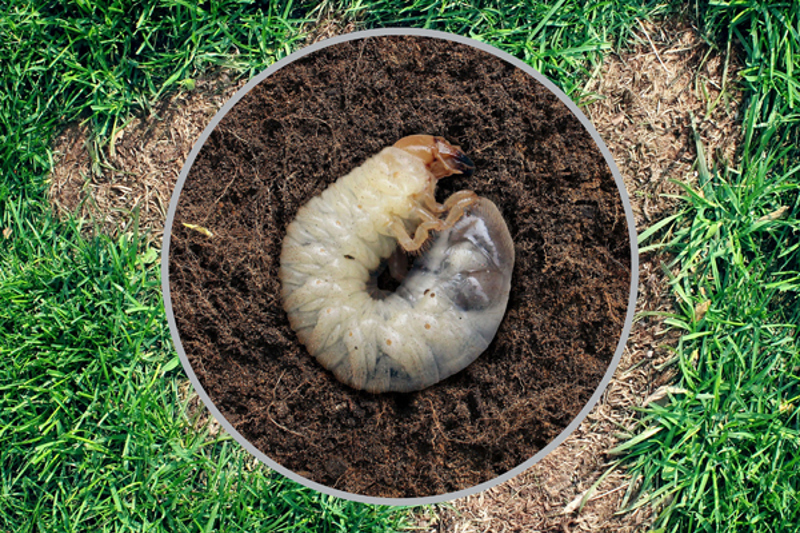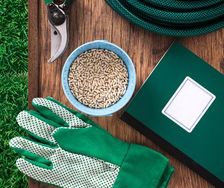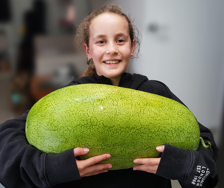Yates Account
Join now
Create a Yates account today!
Sign up to join the Yates Garden Club for monthly e-mails packed with seasonal inspiration, tips for success & exclusive promotions.
Plus if you’re a Garden Club member you can take part in the Yates Growing Community - a blog to share successes, get advice & win prizes in fun challenges along the way!

Forgot password
Enter the email address associated with your account, and we'll email you a new password.
Coleoptera
Costelytra giveni
(formerly known as Costelytra zealandica)

What are Grass Grubs?
Grass Grubs are the larval stage of a native scarab beetle, which chew at the roots of plants and lawns. Grass grubs feed on plant roots in large numbers; they can cause severe damage to lawns, gardens and potted plants. The adult beetles are notorious for chewing large holes in the leaves of fruit trees and vegetables, along with scarring fruit.
During late spring and summer, on warm, calm evenings the adult beetles fly in swarms, feeding and laying eggs in soil (including lawns or gardens). Adult beetles are attracted to light, so it’s quite common between October and January to see them buzzing around street lighting. If your outdoor lighting is close to your lawn area, try to avoid using it for extended periods through spring and summer, to reduce the number of beetles that are attracted towards your grass. During the day the beetles will burrow into the soil, emerging again at dusk.

Grass grub beetle
In the upper half of the North Island, grass grub beetles are often confused with the smaller native Bronze Beetle (Eucolaspis brunnea), which flies in late spring to early summer. Bronze beetles also have a habit of chewing holes in leaves and damaging fruit; likewise, their larvae look very similar to grass grubs and will also attack grass roots.
Grass grub larvae begin to hatch out in summer, and start grazing on roots immediately. Larvae are most active from autumn into winter, and can cause severe damage to lawns, gardens and potted plants during the cold season (when they reach their largest size).
Grass grub larvae have a cream body with a light brown head and vary in size from 6mm to 20mm, as they grow. The tail end of the grub may look darker brown, which is due to the soil the grub has ingested during feeding. They have a distinctive ‘curl up’ behaviour when dug up or disturbed.
Grass grubs are among the most destructive pasture pests in NZ and are a real challenge for the agricultural sector.

Symptoms
The classic symptom of grass grub infestation is brown dead patches developing in the lawn, or sections of grass that can be easily lifted up like the edge of a carpet. If plants in your garden or pots are wilting despite being well watered, that’s also a sign grubs may be at work.
To confirm grass grubs are the problem, you can do a ‘spade test’; this is how farmers have done it for generations. Step on your spade to cut a square hole in your lawn soil, about a spade-width on each side, and a spade-blade deep. Lever out the ‘cube’ of soil you’ve made and dump it into a wheelbarrow. Crumble up the soil cube, searching through it for white grubs. If you don’t find any grubs, repeat the process in a different spot – the more samples you take, the more reliable your test will be.

How to Protect Your Lawn from Grass Grubs
Yates Lawn Grub and Porina Kill + Protect delivers excellent preventative control against grass grub larvae. For best results, apply the granules from January to March. The long residual performance of Yates Lawn Grub and Porina Kill + Protect provides up to 6 months protection.
Keeping your lawn strong and healthy really helps it to resist pest pressure. Give your lawn a weekly deep watering, mowing at a higher level and feeding it regularly with Yates Dynamic Lifter Organic Lawn Food.

Plants Impacted by Grass Grub Larvae
- Lawn grass
- Strawberry
- Raspberry
- Brassica vegetables
- Beetroot
- Corn & Maize
Plants Impacted by Adult Grass Grub Beetles
- Lawn grass
- Plum
- Peach & Nectarine
- Cheery
- Apricot
- Pear
- Apple
- Roses
- Grape
- Citrus
- Strawberry














Share
Share this article on social media